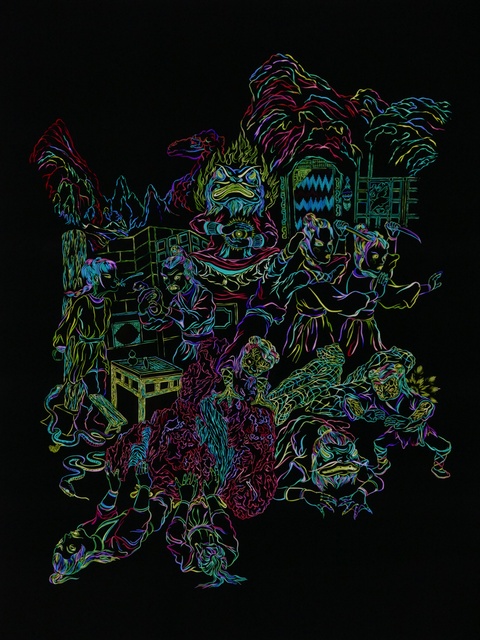

























Having already been away from home for week, I craved Chinese cuisine. We rode the tube to Piccadilly Circus, and wandered to find Chinatown on Gerrard Street — an easy street to remember, since the Chinatown at home bears the same name.
With the history of the Tavistock Institute at top of mind, we rode the tube up to Swiss Cottage to look at the Tavistock Clinic. The Institute and Clinic used to be colocated, but are now independent entities. On a late Sunday evening, the facilities were closed.
As a change from riding the London underground, we decided to return to the hotel on a double decker bus to see more of the city. We rode from Swiss Cottage on a path including Wellington Road, to Victoria Station.
The next day, I acted as scribe while Gary conducted an interview with Sir Richard Bowlby, on the ties between the research between by John Bowlby and cybernetics. Upon learning that the Bowlby archives are at the Wellcome Library, Gary and I decided to change our travel plans to reroute back through London for one day.
Accommodating a tight schedule, Dav and LJ met us at Paddington Station a few hours before we caught the train to Oxford. LJ found a pub and then a restaurant nearby, after consulting Internet reviews on her mobile phone. Continue reading “2009/08/30-09/05 London-Oxford-London-Hull-York“
At the northwest corner of Queen Street East at Broadview Avenue is the New Broadview House Hotel. The strip club on the ground floor marks the neighbourhood as ungentrified, although rumours of a renovation into boutique hotel sometimes appear.
On the southeast corner of Queen Street East and Broadview Avenue is a caribbean restaurant, The Real Jerk. The bright colours make it a landmark, and disguise the prior history of the building as former branch of the Royal Bank.
The 504 King streetcar comes from downtown, follows Queen Street East for a few blocks, and then turns north onto Broadview Avenue.
The Cai Yuan store at the southeast corner of Broadview Avenue and Gerrard Street always has large displays of fresh fruit outside facing north, and vegetables and packaged goods facing west.
On the south side of the Gerrard Street, as the next building east, is a branch of Trinity Supermarket. This building was renovated a few years ago, and I shop here often. Continue reading “2008/05/29 Grocery shopping on bike from Riverside to Chinatown East“
To the north is the typical Paris traffic circle.
Around the corner and walking south, the street mixed residential, with a typical neighbourhood places. Continue reading “2008/01/16 Porte d’Italie, Chinatown near Port de Choisy, Paris“
Chinatown in DC isn’t more than a few blocks long. There’s probably fewer than ten Chinese restaurants there.
 Continue reading “2007/10/17 Chinatown to Canadian Embassy, Washington, DC“
Continue reading “2007/10/17 Chinatown to Canadian Embassy, Washington, DC“
The harbour is to the south, but we weren’t particularly interested in walking down to see the maritime museum.